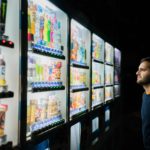The biases that hamstring our decision making
Decision making can be psychologically, emotionally and sometimes even physically exhausting. That’s why all of us have created mental shortcuts, biases, and preferences that help us make decisions. While this can save us time and fatigue, it doesn’t always help us make the best decisions.

The reality is that we assess options based on how we see the world today and what we’ve experienced, which limits our ability to make the best decision.
When those beliefs get in the way of our own best interests, though, it can be difficult to sidestep them. “All of us build biases and beliefs based on our own experiences, but they aren’t always accurate. A belief may skew our decision making and cause us to make a less-than-ideal choice. That’s when we can benefit from a ‘nudge’ that reminds us to consider other factors outside our bias,” said Michelle Gels, Behavioral Economics Discipline Head at BBVA. “Financial institutions might help consumers make more appropriate decisions, for example, with a nudge that ‘most people need to save more for retirement,’ and then helping them more accurately estimate future expenses. This kind of nudge would help overcome an overconfidence bias.”
Organizations like BBVA that study behavioral economics focus on three main categories that can impact decision making: short cuts, beliefs, and preferences. Each category presents the possibility for irrational or inaccurate decisions, as well as potential prompts to help us make better ones. Here are a few beliefs which get in the way of good decision making.
- Overconfidence bias allows us to overestimate our own ability to achieve our goals. For example, 93 percent of people consider themselves to be better-than-average drivers, which is statistically impossible. This bias makes it challenging to save enough for retirement, because we are overconfident in our ability to accurately determine our future financial needs. Financial institutions can help with this by sharing information about how much others save, what’s needed to fund retirement, and the potential future challenges that might create shortfalls.
- Projection bias lets us think our current situation will remain unchanged over time. For example, if we are healthy now, projection bias allows us to believe we’ll remain healthy in the future. That’s not necessarily inaccurate -- we might in fact remain healthy well into the future -- but it may make it easier for us to overlook other possibilities and not plan adequately for future healthcare costs. It’s also why grocery shopping when you’re hungry is a bad idea; if you’re hungry now, you will likely overbuy since you expect to be this hungry later, too.
- Sunk cost is the tendency to continue doing something -- an activity, an investment, even a relationship -- just because we’ve already invested so much time, effort or money into it. We are just optimistic enough to believe that we should continue spending money on car repairs long past the time to buy a new one.
- Confirmation bias leads us to seek out information that confirms our current beliefs and discount information that contradicts it. This bias obviously makes it hard for us to be receptive to useful information which could help us make a better decision, and may result in repetitive poor choices.
Gels: We want to draw attention to relevant information at the right time to help customers make better decisions.
“When we anticipate the biases consumers bring to each decision, we can present information in a way that shines a light on information they’re likely to overlook,” Gels said. “There are times when our biases are actually accurate. Biases can be a valid part of the decision-making process, but they shouldn’t be a substitute for thinking about what’s best. We want to draw attention to relevant information at the right time to help customers make better decisions.”
Other behavioral economics premises are based on the shortcuts consumers use to make everyday decisions, which can impact consumer decision making. Read more about those here.
This article is the third in a series on behavioral economics. Click below to read other articles in this series:
What is behavioral economics?How can behavioral economics help consumers?